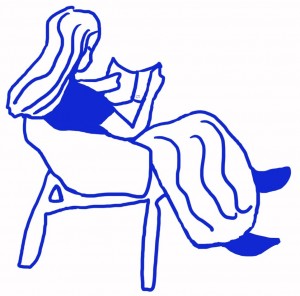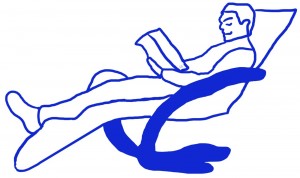 It’s summer, and you’re thinking to yourself how you’d really like to catch up on reading some classic works of fiction, but, hey, maybe you’re also thinking how you’d also really like to read something, how shall we say, a little lighter, a little more lounge chair friendly? If this has happened to you, we at the library could certainly suggest any number of graphic novels for your reading pleasure, but you may want to specifically consider the growing field of graphic novel adaptations of literary classics.
It’s summer, and you’re thinking to yourself how you’d really like to catch up on reading some classic works of fiction, but, hey, maybe you’re also thinking how you’d also really like to read something, how shall we say, a little lighter, a little more lounge chair friendly? If this has happened to you, we at the library could certainly suggest any number of graphic novels for your reading pleasure, but you may want to specifically consider the growing field of graphic novel adaptations of literary classics.
What is a graphic novel adaptation? According to the OED, an adaptation can be “an altered or amended version of a text,” or “the action or process of altering, amending, or modifying something, esp. something that has been created for a particular purpose, so that it [is] suitable for a new use.” Then, an adaptation can vary greatly in its relationship to the original text. While it is tempting to think in terms of accuracy or faithfulness, graphic novel adaptations of classic works need not be word for word illustrations. Adaptations might rework, paraphrase, or completely re-imagine the original text.
You may find it difficult to picture classic works in graphic novel form, but according to this article by Armando Celayo and David Shook, this practice has been going on since the 1940’s. Mark Letcher notes in this article that there is a growing market for adaptations from medieval poetry to Shakespeare. In their article, Katherine T. Bucher and M. Lee Manning discuss the benefits of teaching young adult students with graphic novels, including adaptations of authors such as J.R.R. Tolkien, Marcel Proust, and Franz Kafka.
By performing a Catalyst Article Search, I was able to learn even more about this growing field. For example, not only are classics being adapted, but also contemporary works of fiction such as Stieg Larsson‘s the Girl with the Dragon Tattoo. Adapted by Denise Mina, this article describes the approach Mina took in adapting the novel.
Feeling ready to dive in? There are lots of books to choose from at MSEL.
- Tim Hamilton’s Ray Bradbury’s Fahrenheit 451: The Authorized Adaptation presents Bradbury’s book as a reduced text version in standard graphic novel form.
- Howl: A Graphic Novel with art by Eric Dooker illustrates the famous poem by Allen Ginsberg and includes art from the Howl movie. Typewritten font over dramatic visions creates a fantasy tempered by the historical moment in which Ginsberg wrote the original poem.
- African-American Classics edited by Tom Pomplun and Lance Tooks contains illustrations of short classic works in comics form by authors such as Langston Hughes, Zora Neale Hurston, and Paul Laurence Dunbar. With multiple illustrators, each text has its own distinct flavor, bringing the words to life with a palette of bright colors, staunch contrasts, and expressive artwork.
- The Odyssey moves away from the strictly illustrative. Seymour Chwast’s adaptation recreates Homer’s Odyssey by reinventing the story using a conversational tone within a modern frame story.
- To broaden your horizons beyond fiction classics, check out Nicolle Rager Fuller and Michael Keller’s Charles Darwin’s On the Origin of Species: A Graphic Adaptation. This adaptation is a mix of reenacted and imagined scenes, relevant back story for the general audience reader, quotes from Darwin’s correspondence, and extensive content from On the Origin of Species by Means of Natural Selection: Or The Preservation of Favoured Races in the Struggle for Life.
 With so much variance, you might want to consider taking the originals and the adaptations to your lounge chair (always keeping your library books well away from sand and water!). You may find that that the graphic novels are just as challenging as the original texts!
With so much variance, you might want to consider taking the originals and the adaptations to your lounge chair (always keeping your library books well away from sand and water!). You may find that that the graphic novels are just as challenging as the original texts!
